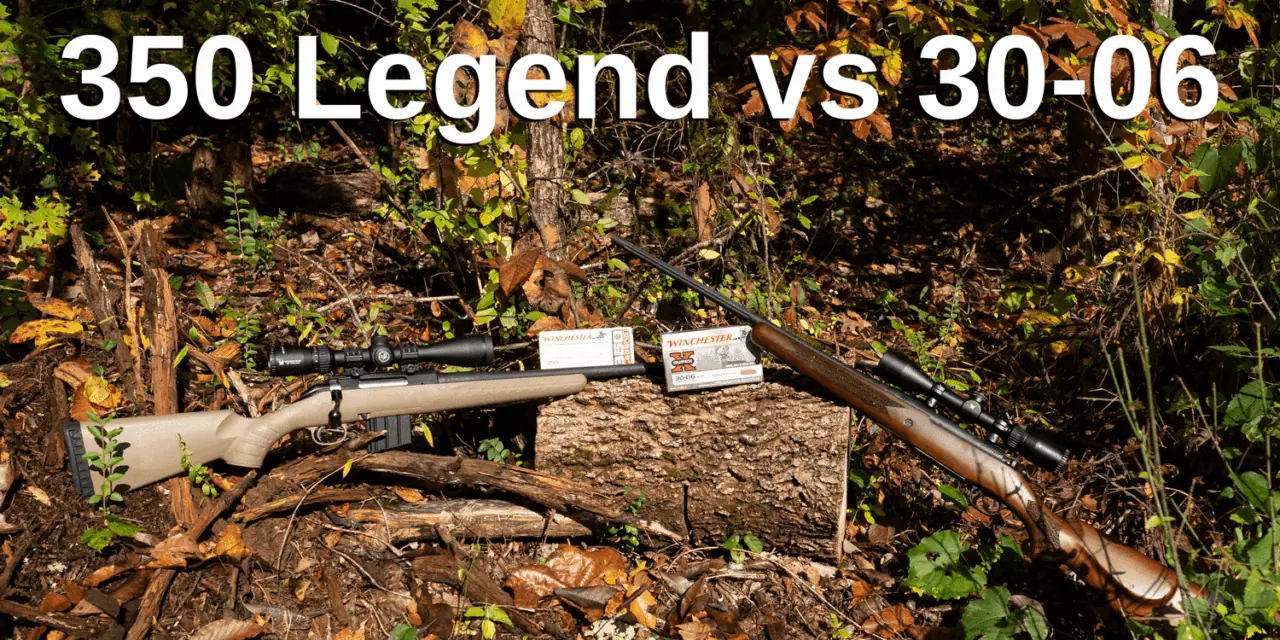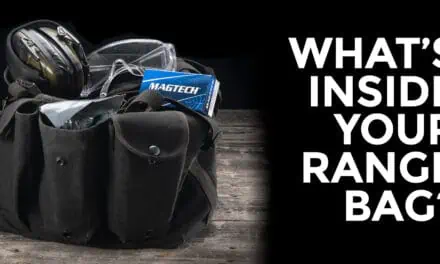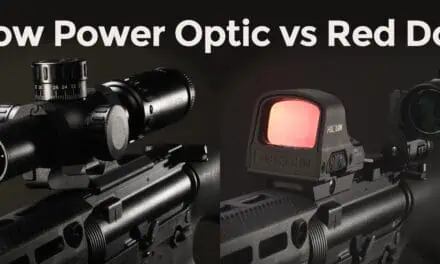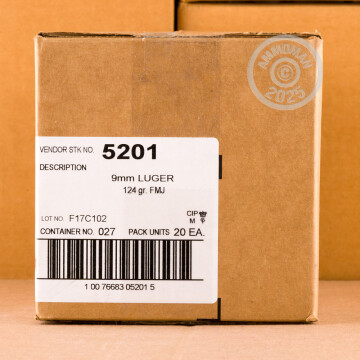350 Legend vs 30-06
There are the two things which rifles are most often designed to do – protect human life and take game, like deer. When considering 350 Legend vs 30-06, both are great choices and make sense for both of those purposes.
But a rifle cartridge which excels at combat may also work well for deer hunting. Take the 30-06 Springfield, for example. While no cartridge is without its shortcomings, the 30-06 was America’s standard rifle cartridge during WWI and WWII. If you’ve won World Wars, whichever ammo you used must have worked well enough. The 30-06 stayed in service for many decades. Veterans accustomed to firing it naturally wanted to keep firing it, which alongside the widespread availability of surplus government ammo cemented the 30-06’s place as an American deer hunting cartridge.
The 30-06’s popularity hasn’t stopped ammo manufacturers from developing new specialized deer hunting rounds, however. Winchester provided a good example when they introduced the 350 Legend in 2019. The 350 Legend is ALL about deer hunting, and its garnered quite a following in spite of its youth (not to mention its introduction just before a historic commercial ammo shortage). If the 30-06 works so well, why did Winchester bother with the 350 Legend at all? Because they saw an opportunity to offer something different and good: cheaper hunting ammo with lower recoil, at the cost of a shorter effective range. Let’s compare these rounds.
Cartridge Dimensions
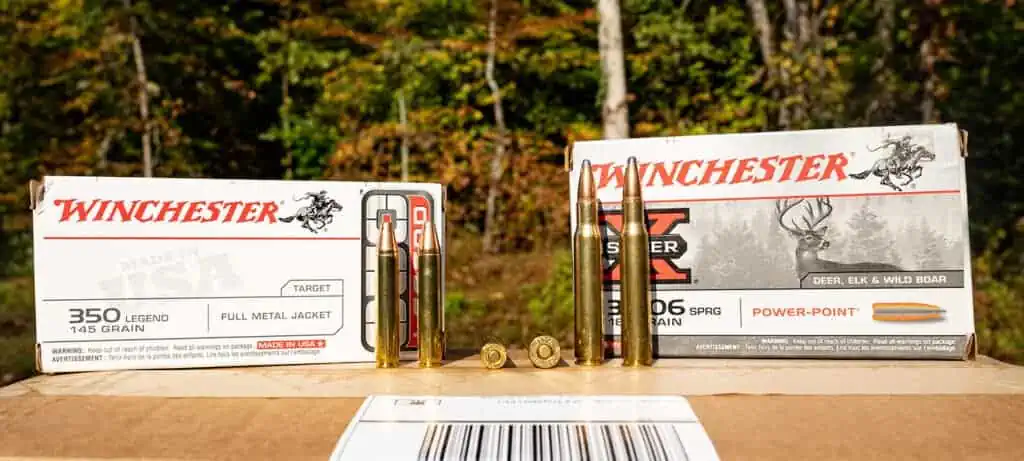
| 350 Legend | 30-06 | |
|---|---|---|
| Parent case | N/A | 30-03 Springfield |
| Case type | Rebated rim, straight walled | Rimless, bottleneck |
| Bullet diameter | 0.357 in | 0.308 in |
| Neck diameter | 0.378 in | 0.34 in |
| Shoulder diameter | N/A | 0.441 in |
| Base diameter | 0.390 in | 0.471 in |
| Rim diameter | 0.378 in | 0.473 in |
| Case length | 1.71 in | 2.494 in |
| Overall length | 2.25 in | 3.34 in |
| Case capacity | 36.5 gr H2O | 68 gr H2O |
| Maximum pressure | 55,000 psi | 60,190 psi |
You can expect significant differences in performance when you compare two cartridges of such unequal size. The 30-06 is 48% longer than the 350 Legend, and its case has 86% more capacity for powder! Indeed, the 30-06’s propellant charge can easily weigh twice as much as the 350 Legend’s. But the actual volume of a round’s propellant doesn’t tell you everything. Keep in mind that the 30-06 was designed in 1906 – 113 years before the 350 Legend entered production. Firearm technology improved substantially in that time, and much smaller charges of powder are now able to provide the same degree of propulsion. Still, we can safely assume the substantially beefier 30-06 is putting more power behind its bullet.
The 350 Legend’s performance could be improved by a bottleneck. A case which tapers at its neck chambers a little more reliably, and it also concentrates propellant gasses so they can propel the bullet more effectively. But the straight-walled 350 Legend ammo case lacks a bottleneck by design. This is because Winchester intended to cater to hunters living in jurisdictions which prohibit bottlenecked ammunition during deer season. 30-06 ammo has America’s beloved .30 caliber bullet, whereas the 350 Legend bullet is approximately 16% wider in diameter. All other things being equal, a wider bullet must encounter more air resistance in flight. If the 30-06 and 350 Legend differed only in bullet diameter, then we could still expect to see a flatter trajectory from the older round.
Ballistic Performance
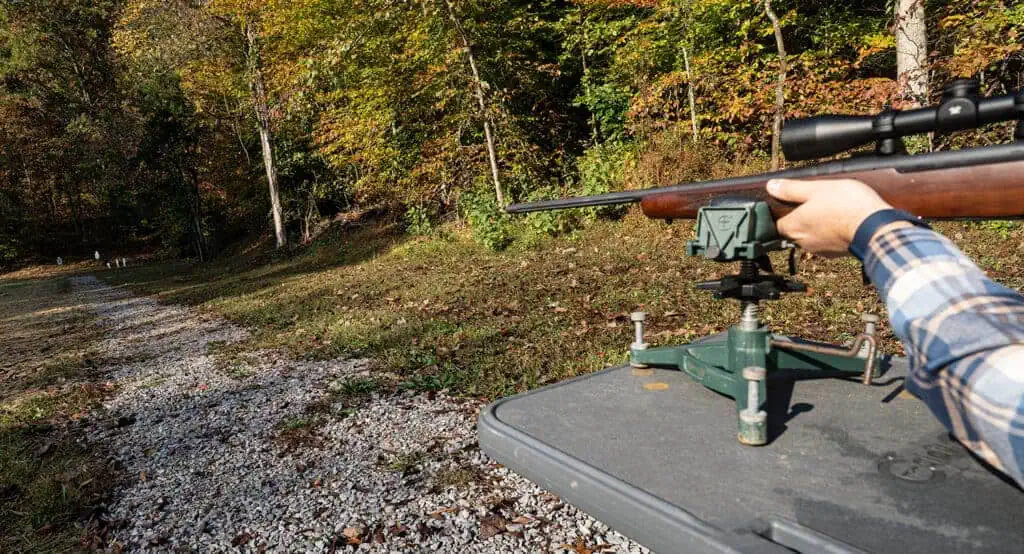 We tried our best to compare extremely similar 350 Legend and 30-06 cartridges.
We tried our best to compare extremely similar 350 Legend and 30-06 cartridges.
Velocity
| 350 Leg - Win USA 145gr FMJ | 30-06 - Win Power Max Bonded 150gr PHP | 350 Leg - Fed Fusion 160gr SP | 30-06 - Fed Fusion 165gr SP | 350 Leg - Fed Power-Shok 180gr SP | 30-06 - Fed Power-Shok 180gr SP | |
|---|---|---|---|---|---|---|
| Muzzle velocity (fps) | 2350 | 2920 | 2300 | 2790 | 2100 | 2700 |
| Velocity @ 100 yds | 1923 | 2640 | 1998 | 2594 | 1799 | 2474 |
| Velocity @ 200 yds | 1552 | 2377 | 1722 | 2406 | 1531 | 2259 |
| Velocity @ 300 yds | 1254 | 2129 | 1477 | 2226 | 1305 | 2055 |
| Velocity @ 400 yds | 1060 | 1897 | 1272 | 2053 | 1134 | 1862 |
| Velocity @ 500 yds | 947 | 1682 | 1118 | 1889 | 1021 | 1682 |
| Velocity @ 600 yds | 869 | 1488 | 1016 | 1734 | 944 | 1516 |
| Velocity @ 700 yds | 806 | 1318 | 944 | 1589 | 885 | 1368 |
| Velocity @ 800 yds | 751 | 1180 | 887 | 1455 | 835 | 1240 |
| Velocity @ 900 yds | 703 | 1077 | 840 | 1334 | 791 | 1137 |
| Velocity @ 1000 yds | 658 | 1003 | 798 | 1229 | 752 | 1059 |
We calculated ballistic data for rounds with similar (or identical) bullet weights, but as you’ll see that hardly makes their trajectories similar. (Note that our elevation data reflect a sight height of 1.5”.)
Trajectory
The 30-06’s trajectory is flatter – much flatter. Such ballistic performance is necessary for a combat rifle cartridge which was intended to be effective at neutralizing enemy combatants at 1,000 yards. You may have no intention of ever hitting a 1,000-yard target, but you’ll find that the 30-06’s flatter trajectory makes aiming easier while you’re firing over any distance. And better yet, the 30-06 reliably pins down bucks out to 400 yards. The 350 Legend’s maximum effective range for deer hunting, however, is only 250 yards. It could conceivably neutralize a threat over longer distances, although its slower-moving bullet’s markedly steeper trajectory does make it rather difficult to hit a target beyond 300 yards.
| 350 Leg - Win USA 145gr FMJ | 30-06 - Win Power Max Bonded 150gr PHP | 350 Leg - Fed Fusion 160gr SP | 30-06 - Fed Fusion 165gr SP | 350 Leg - Fed Power-Shok 180gr SP | 30-06 - Fed Power-Shok 180gr SP |
|---|---|---|---|---|---|
| 0.186 | 0.33 | 0.264 | 0.461 | 0.25 | 0.391 |
| 0.1 | 0.167 | 0.149 | 0.232 | 0.142 | 0.198 |
| 4.05 | 1.76 | 3.66 | 1.85 | 4.7 | 3.61 |
| 0.02 | 0.01 | 0.02 | 0.02 | 0.03 | 0.01 |
| -18.68 | -7.93 | -15.43 | -7.84 | -19.59 | -10.43 |
| -59.61 | -23.57 | -46.94 | -22.73 | -59.72 | -29.13 |
| -131.4 | -48.93 | -100.02 | -45.89 | -126.87 | -57.89 |
| -241.85 | -86.63 | -180.86 | -78.82 | -227.29 | -99 |
| -398.59 | -140.11 | -295.54 | -123.35 | -366.89 | -155.27 |
| -608.95 | -213.66 | -449.03 | -181.68 | -550.97 | -230.17 |
| -881.39 | -312.18 | -646.95 | -256.48 | -784.94 | -327.7 |
| -1224.91 | -440.85 | -894.16 | -350.84 | -1074.9 | -452.32 |
There’s no denying the 30-06’s superior accuracy at medium-to-long range. But it’s not fair to call the 350 Legend “less accurate. It’s plenty accurate within the distances it was specifically designed to cover!
Stopping Power
“Stopping power” is a contentious phrase in the shooting community. It implies that one single aspect of a cartridge’s performance makes it deadlier, when in fact it is a delicate interplay between aim, sectional density, terminal ballistics, and several other factors which contribute to a bullet’s capacity for destruction. That said, the 30-06 is certain to deal more damage to its target at any conceivable range. Its muzzle energy is approximately 60% greater than the 350 Legend’s. It also consistently retains at least 1,000 ft lbs of energy (the minimum typically advised for humane whitetail hunting) well beyond 500 yards.
The 350 Legend is fortunate to retain over 1,000 ft lbs of energy beyond 200 yards – but again, you would not want to fire the cartridge over distances much farther than that.
| 350 Leg - Win USA 145gr FMJ | 30-06 - Win Power Max Bonded 150gr PHP | 350 Leg - Fed Fusion 160gr SP | 30-06 - Fed Fusion 165gr SP | 350 Leg - Fed Power-Shok 180gr SP | 30-06 - Fed Power-Shok 180gr SP | |
|---|---|---|---|---|---|---|
| Muzzle energy (ft lbs) | 1778 | 2840 | 1880 | 2852 | 1763 | 2914 |
| Energy @ 100 yds | 1191 | 2322 | 1418 | 2465 | 1294 | 2446 |
| Energy @ 200 yds | 775 | 1883 | 1054 | 2121 | 937 | 2040 |
| Energy @ 300 yds | 506 | 1511 | 775 | 1815 | 680 | 1688 |
| Energy @ 400 yds | 362 | 1199 | 574 | 1545 | 514 | 1386 |
| Energy @ 500 yds | 289 | 943 | 444 | 1308 | 417 | 1131 |
| Energy @ 600 yds | 243 | 737 | 367 | 1102 | 357 | 919 |
| Energy @ 700 yds | 209 | 579 | 317 | 925 | 313 | 748 |
| Energy @ 800 yds | 182 | 463 | 280 | 776 | 279 | 614 |
| Energy @ 900 yds | 159 | 387 | 251 | 652 | 250 | 517 |
| Energy @ 1000 yds | 140 | 335 | 226 | 553 | 226 | 448 |
Either of these rounds are strong enough to neutralize a human threat. (They would also destroy your ear drums if fired either one indoors.) These rifle cartridges are overkill for home defense, and their recoil makes them impractical for that application. If you want to dispatch immediate threats to your personal safety with an M1 Garand, have at it, but be advised that your bullet might pass through several of your neighbors’ houses before coming to a stop.
Recoil
Lighter recoil is always preferable. It makes target shooting more comfortable, and it produces less of the muzzle rise which throws your aim off target. You can direct more accurate rapid fire when your rifle isn’t violently bucking backward after every time you squeeze its trigger! Let’s compare the recoil energy of the six rounds in our comparison chart. The only data we need to do that are the cartridges’ muzzle velocities, powder weights, bullet weights and rifle weights. Let’s conveniently assume all 350 Legend rounds have 25 grains of powder and all 30-06 rounds have 50 grains. Let’s also assume we’re firing two 7.5 pound rifles.
| Recoil Energy (ft lbs) | |
|---|---|
| 350 Legend Winchester USA 145gr FMJ | 9.17 |
| 350 Legend Federal Fusion 160gr SP | 10.28 |
| 350 Legend Federal Power-Shok 180gr SP | 10.7 |
| 30-06 Winchester Power Max Bonded 150gr PHP | 20.02 |
| 30-06 Federal Fusion 165gr SP | 21.34 |
| 30-06 Federal Power-Shok 180gr SP | 22.91 |
One of the primary advantages of a lower-powered cartridge is plain to see. The 350 Legend generates approximately half as much recoil as the 30-06 (assuming identical rifle weights, of course; a 9.5 pound M1 Garand would have canceled out significantly more recoil energy). This makes the 350 Legend gentler on the shoulder if you intend to fire it over an extended period, and it also makes it a more suitable pick for youngsters and hunters with lighter frames.
Price & Availability
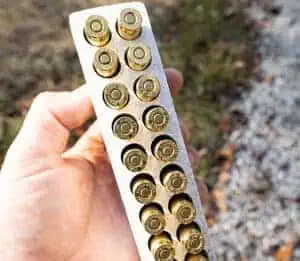 The 350 Legend’s smaller size conveys another great advantage: lower-priced ammunition. It’s only natural that a cartridge which demands less brass during production will also cost less, and it takes manufacturers less gasoline to ship it around the country. You may pay half as much for 350 Legend ammo as you would have paid for 30-06.
The 350 Legend’s smaller size conveys another great advantage: lower-priced ammunition. It’s only natural that a cartridge which demands less brass during production will also cost less, and it takes manufacturers less gasoline to ship it around the country. You may pay half as much for 350 Legend ammo as you would have paid for 30-06.
A few years ago we may have told you that 350 Legend ammo is harder to find, as it had only just been introduced to the market. We couldn’t have guessed whether it would become popular. But the hunting community has really embraced Winchester’s innovative deer cartridge, and now many manufacturers produce it in bulk. But you’re still probably going to enjoy a better selection of ammo if you go with the 30-06. It is one of America’s all-time favorite rifle cartridges. And while American-made military surplus 30-06 is becoming scarcer by the day, it’s still easy to find milsurp 30-06 from the Middle East and Eastern Europe.
There is no milsurp 350 Legend, and there never will be unless the U.S. government declares war on deer. It has done stupider things, so only time can tell.
The Takeaway
The 30-06 is more than a round of ammunition – it is an American legend. The classic cartridge is never going away because deer hunters like what they already know, and they know the 30-06 rules at their sport. But even the 30-06’s strongest proponents can concede that it’s a big cartridge which supplies robust recoil. They can also admit that its 400-yard effective range for deer is not desirable to all hunters, as many folks are comfortable only firing at quarries within 250 yards. And none of them would advise taking deer with a bottlenecked cartridge in a jurisdiction that has illegalized bottlenecked ammunition for hunting. Finally, few 30-06 proponents are wealthy enough to not appreciate the appeal of cheaper ammo. That’s why even a die-hard 30-06 fan can recommend the 350 Legend!

